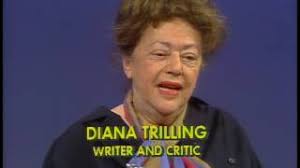17. Michael Washburn
“With those first few lines of ‘Free
Fallin’’ Petty situates himself firmly in the Southern California imaginary, as
much or even more so than Southern Accents planted him down South.”
-Michael Washburn
When I was 13, the Rolling Stone Album Guide steered me wrong. A budding music enthusiast whose every
spare penny went toward building my CD collection, I was heavily guided by this
volume, an alphabetical index of artists, complete with star ratings of all of
their major albums and in-depth essays outlining the essential entries (or
musts-to-avoid) in their catalog. I would scarcely make a move without
consulting the Guide and so, when it informed me that Tom Petty’s finest
album was his 1985 record Southern Accents (****1/2!), I had to rush out
and buy it.
Petty was probably my
favorite musician at that time, his 1989 album Full Moon Fever my
favorite album, and its biggest hit “Free Fallin’” my favorite song. A sunny,
big-hearted record, that was nonetheless filled with intense longing, FMF
conjured up for me a sort of suburban dreamland, a world where everything was
both intensely comfortable and filled with heart-stirring meaning. Although I
myself had an agreeable suburban childhood, the world evoked by Petty,
particularly on songs like “Free Fallin’,” with its catalogue of San Fernando
Valley locales, was distinctly Californian, and thus richer and more mythic
than my own somewhat drab upbringing in Western New York State.
But before he was a
Californian, Petty was a Southerner, a native of North Florida, and Southern
Accents was his attempt to embrace and comment on that Dixie heritage. The
album itself, though, as Michael Washburn chronicles in his excellent new monograph on the record and as my 13-year-old self soon discovered, is not very
good. Contra the Rolling Stone Album Guide’s generous assessment, it is
not Petty’s Exile on Main Street, but an unsatisfying hodgepodge of
songs about the South and thematically unrelated material that is both overproduced
and rife with lots of bad musical ideas. As Washburn explains, there were
several reasons for this unsatisfying quality: the influence of Eurythmics’
multi-instrumentalist Dave Stewart who joined the sessions in the middle, heavy
cocaine usage among the band, and a generalized sense of exhaustion which led
Petty to partially scrap the album’s concept.
But Washburn also points
out another factor in the album’s lack of artistic success, one that I failed
to notice as a young teenager. In fact, the main thesis of his book is that Southern
Accents owes its ultimate failure to the unexamined attitudes that Petty,
as a native Southerner who grew up in the 1950s and 1960s, brought to his home
region, specifically a buying into a Civil War “Lost Cause” mentality and an unwillingness
to acknowledge any but a thoroughly whitewashed vision of the South. In fact,
people of color are all but absent from not only the album’s narratives but
from its entire conception of Southern culture. As a 13-year-old living in a
liberal, though predominantly white, Northern town, this absence didn’t
register with me, but reading Washburn’s book now, it seems clear.
For Washburn, Full
Moon Fever, which was released four years after the disappointment of Southern
Accents (and two years after the further disappointment of his 1987 record Let Me Up (I’ve Had Enough)), found Petty relegating his Southern background
firmly to the past. Instead, he fully embraced his image as Mr. California,
representative citizen of a region no less steeped in (largely misleading) myths
than his native one. And it was this Petty that I most responded to. Full
Moon Fever is certainly the better album of the two, coherent and warm
where Southern Accents is messy and alienating, but it wasn’t just the records’
musical qualities that I was reacting to. Whereas Petty’s south was ultimately
an ugly world of drunks, CSA nostalgists, and unrepentant rednecks, his suburbanized
California was a world I wanted desperately to inhabit. This version of
California, though, was no less misleading than the other, and in embracing
this sunny flipside to dreary Dixie, I proved myself just as willing to buy
into regional mythology as Petty was in his misguided 1985 venture.



Comments
Post a Comment